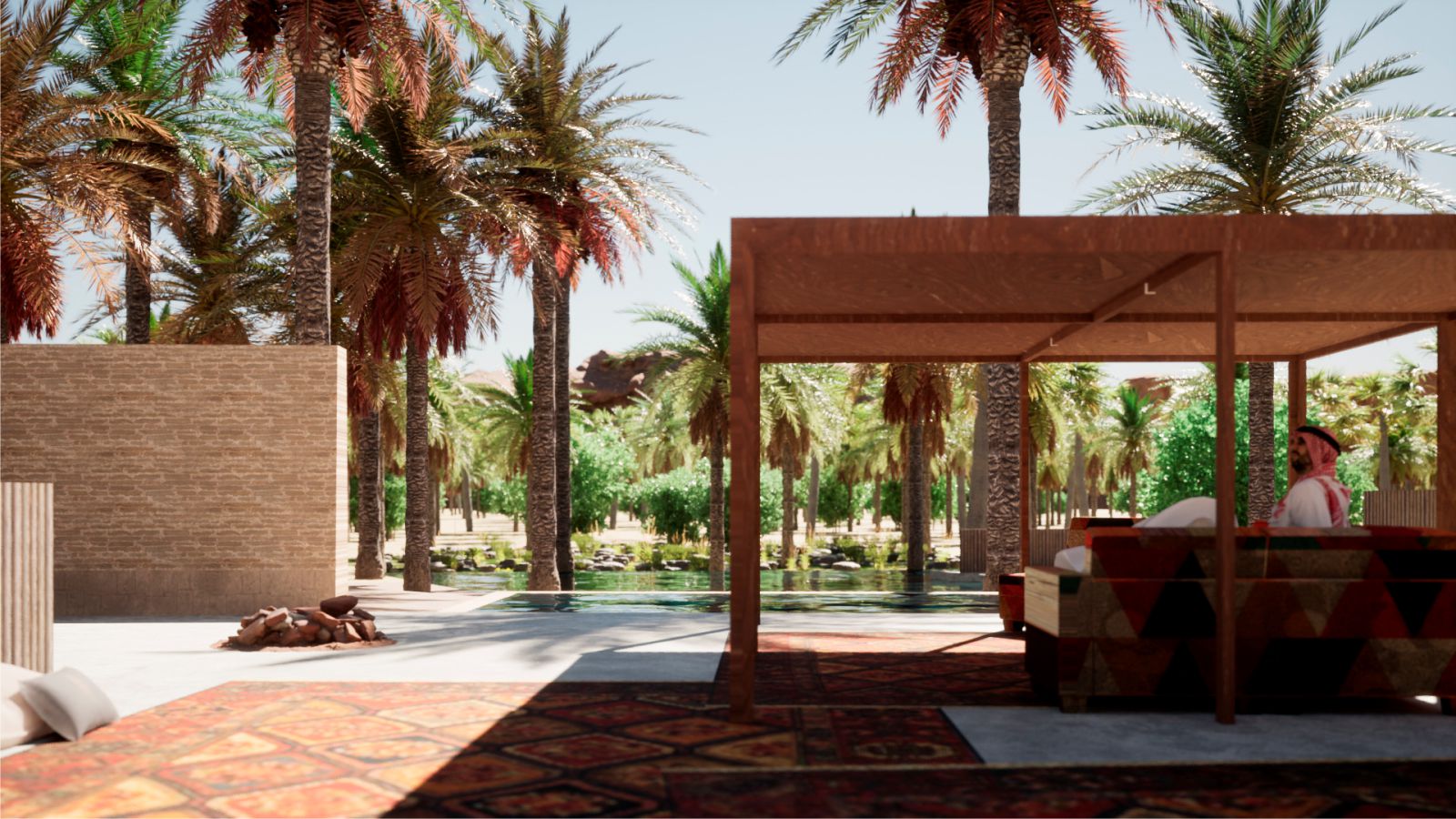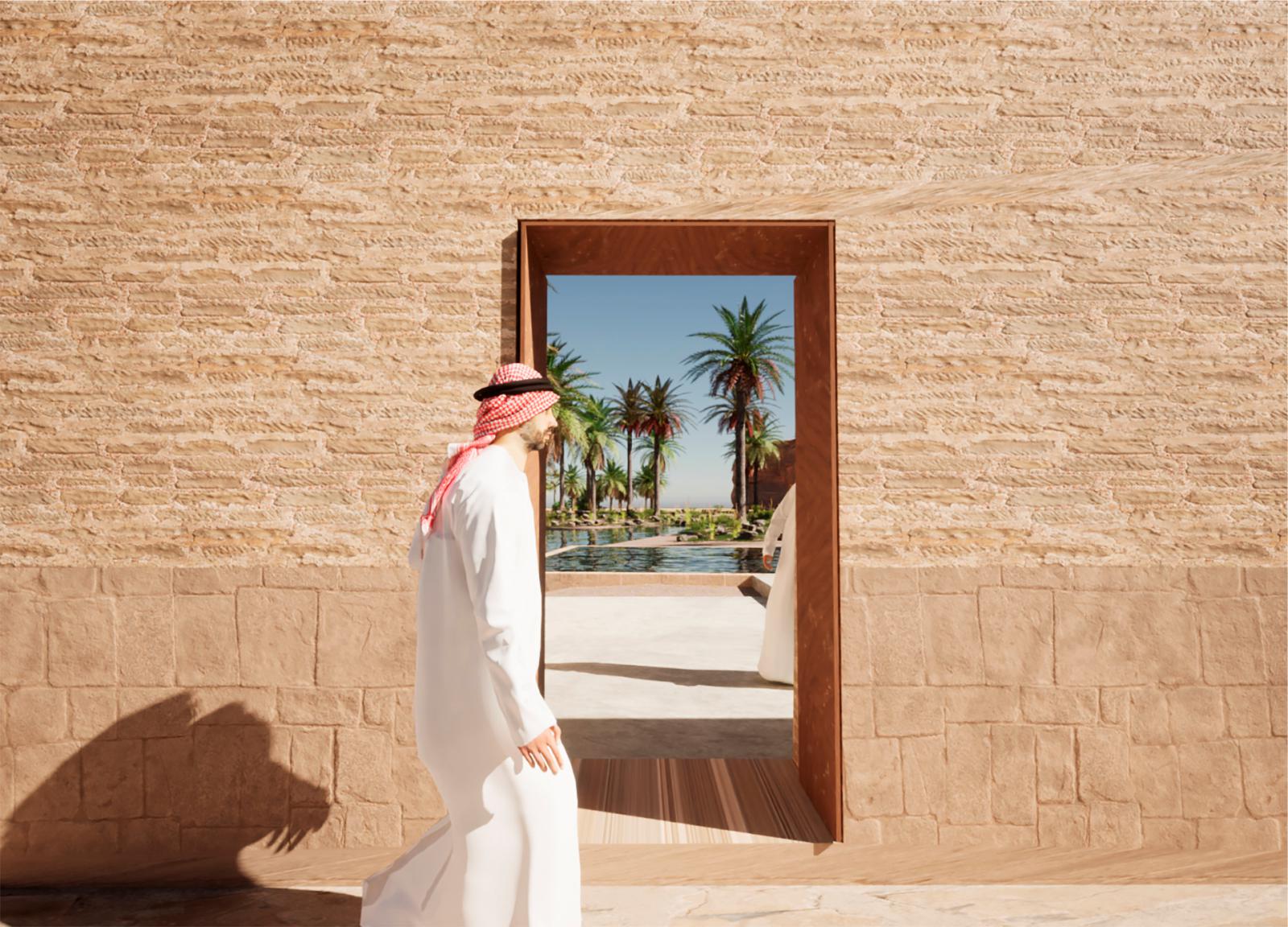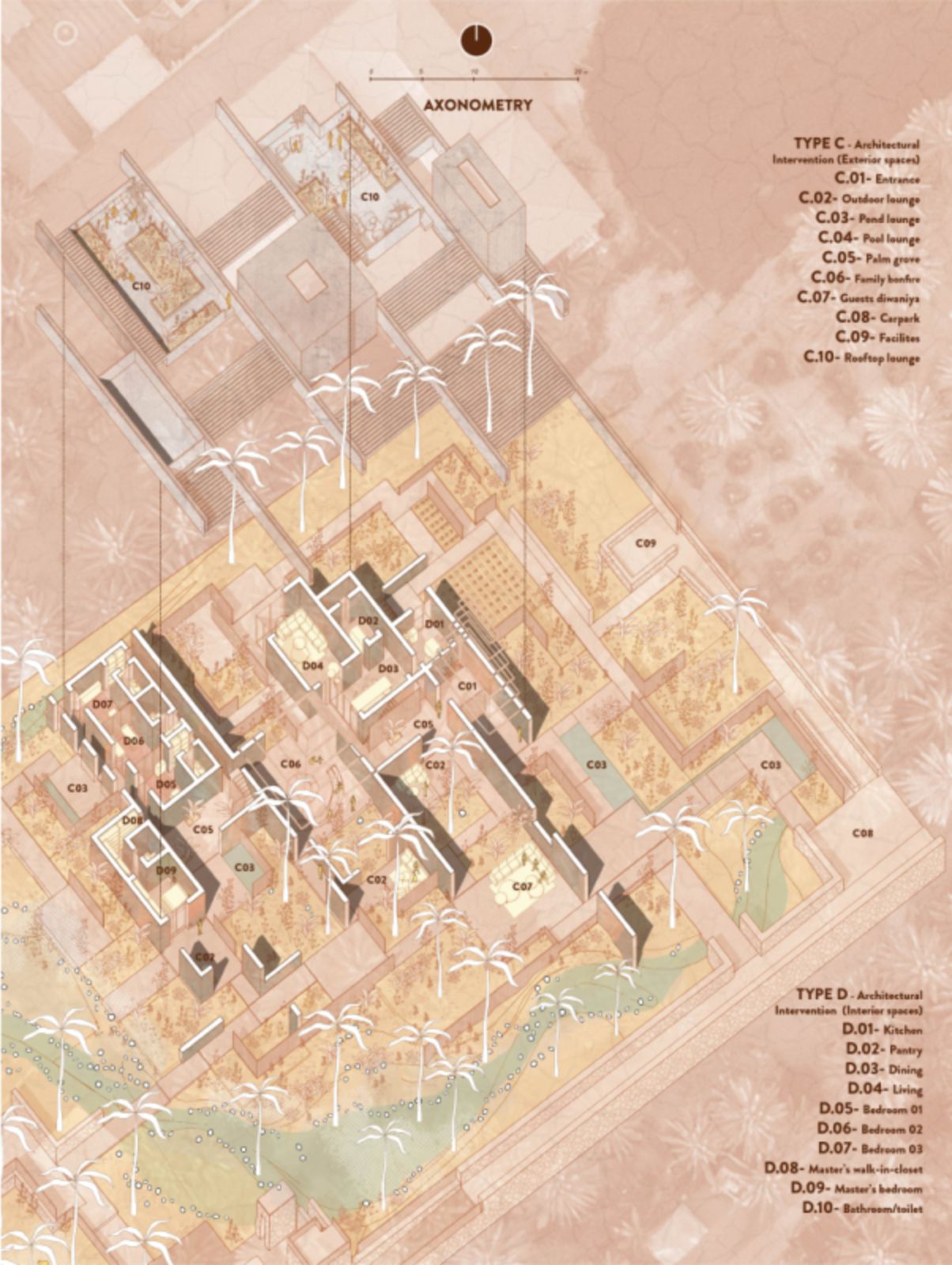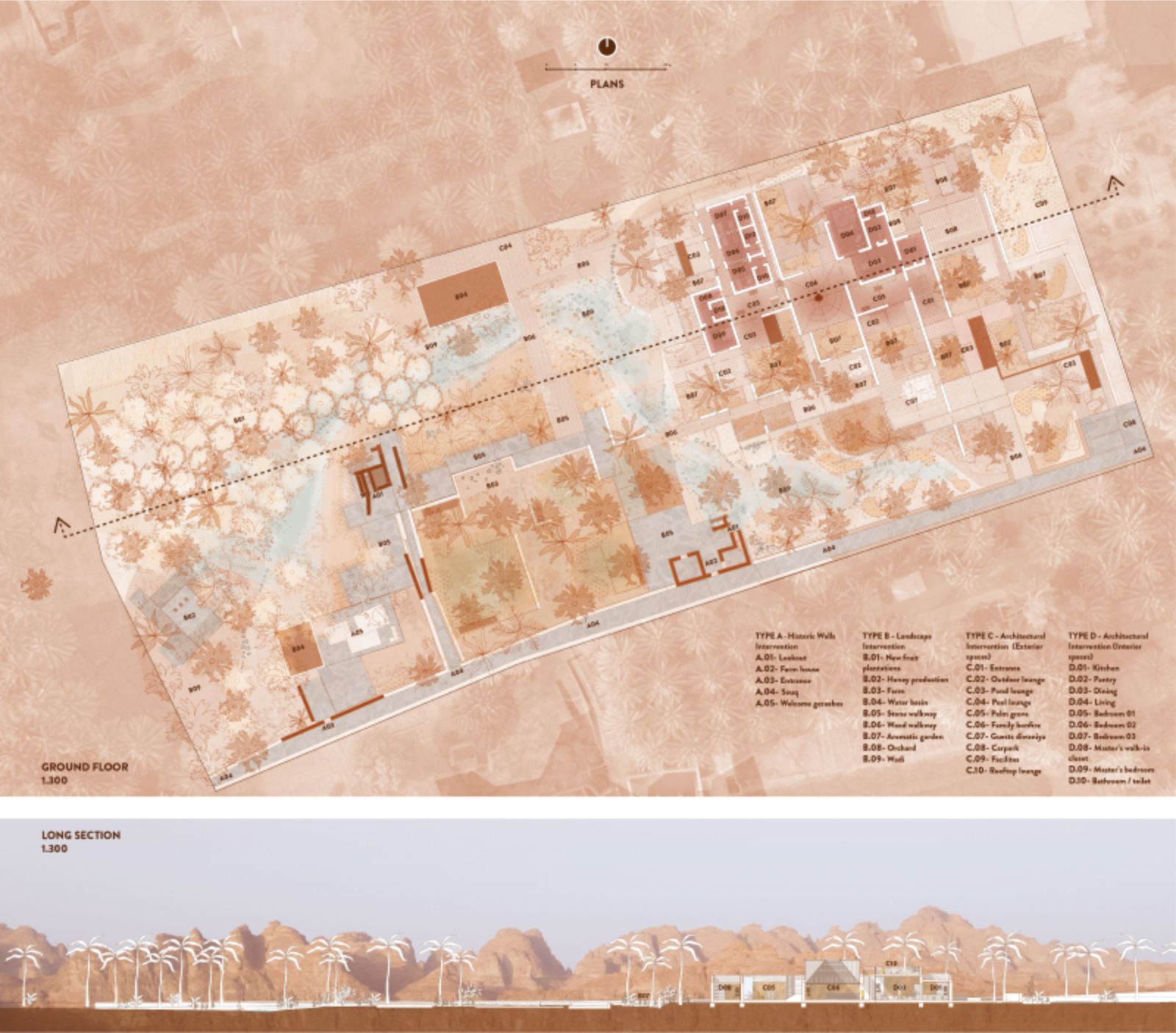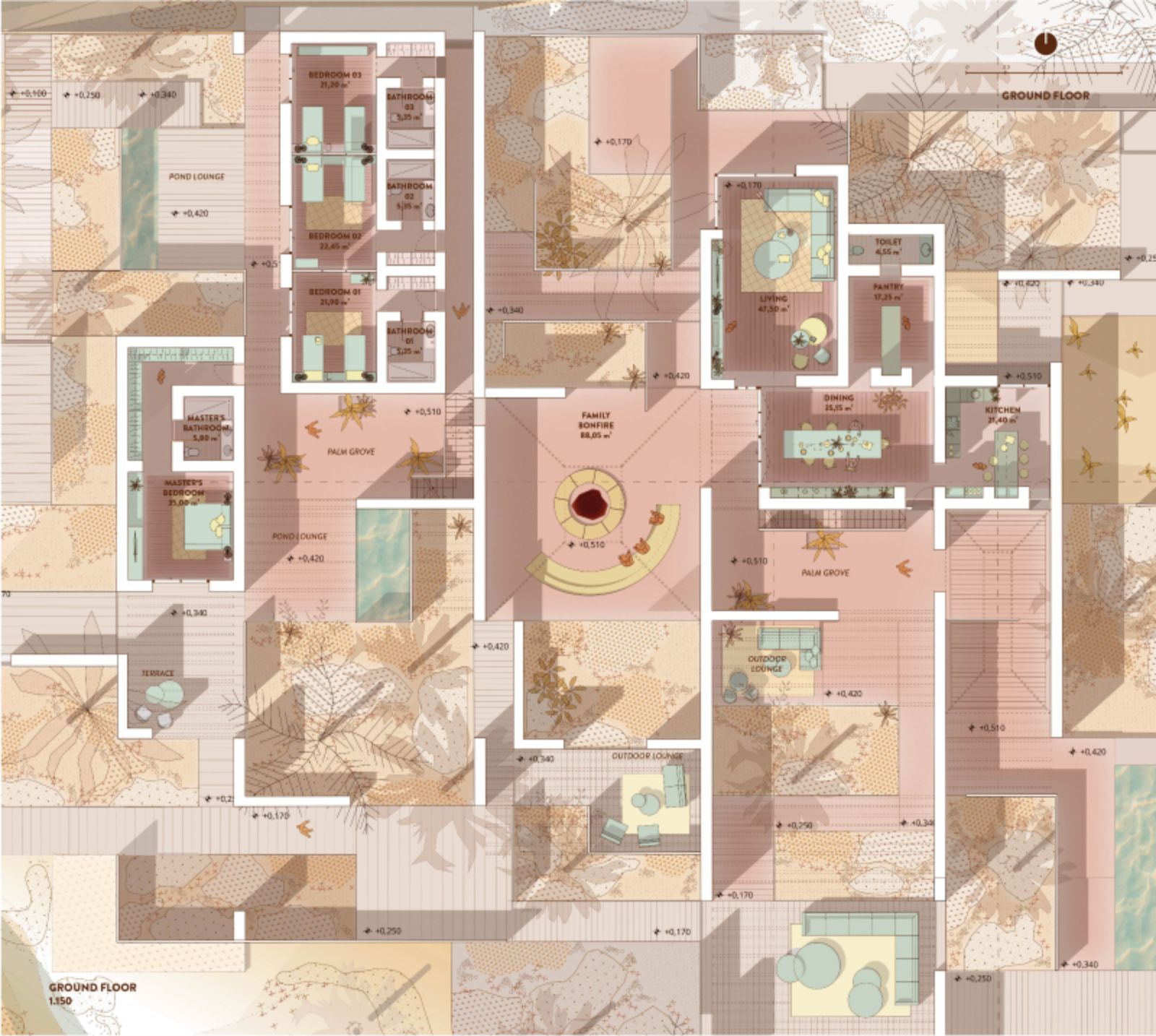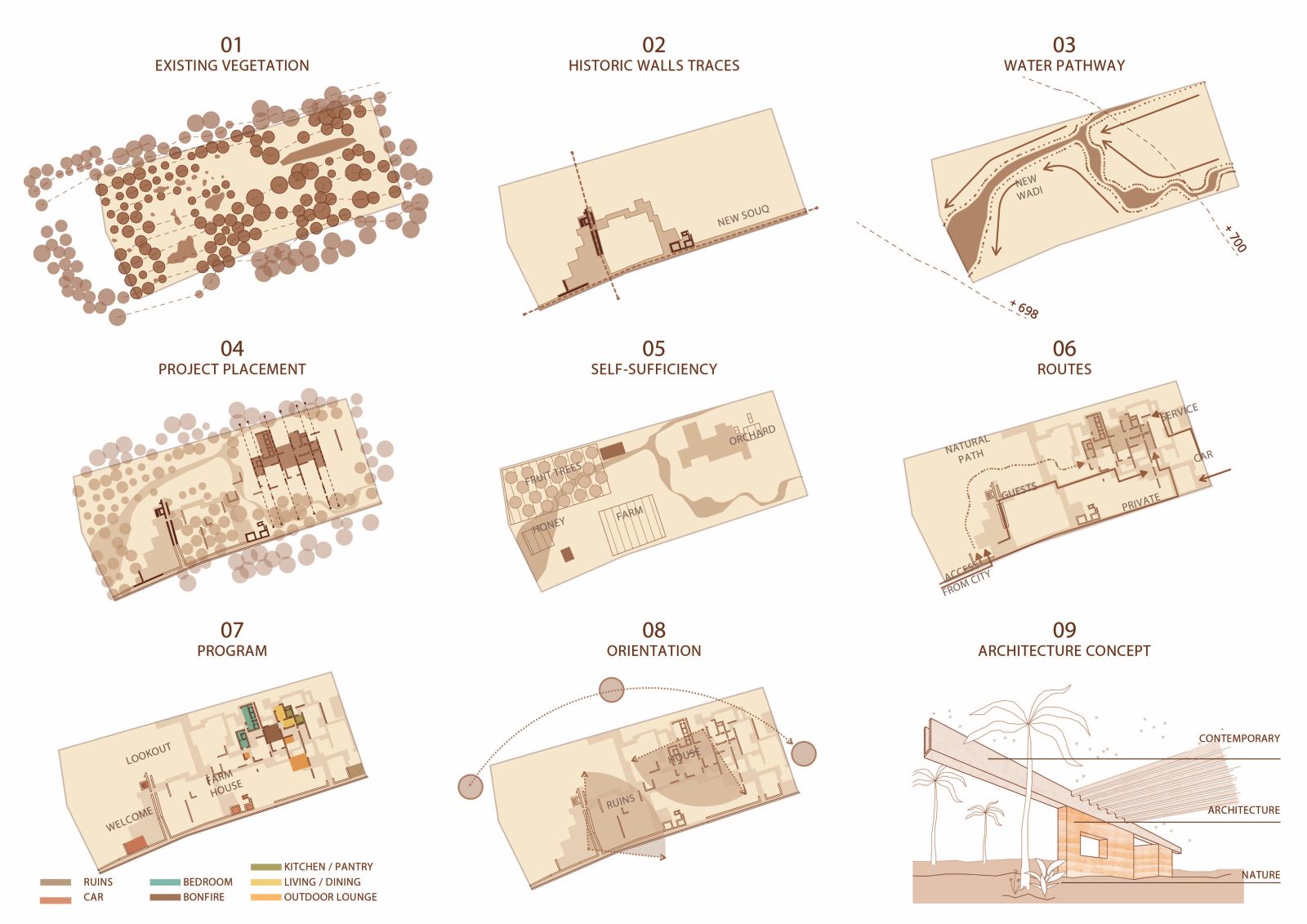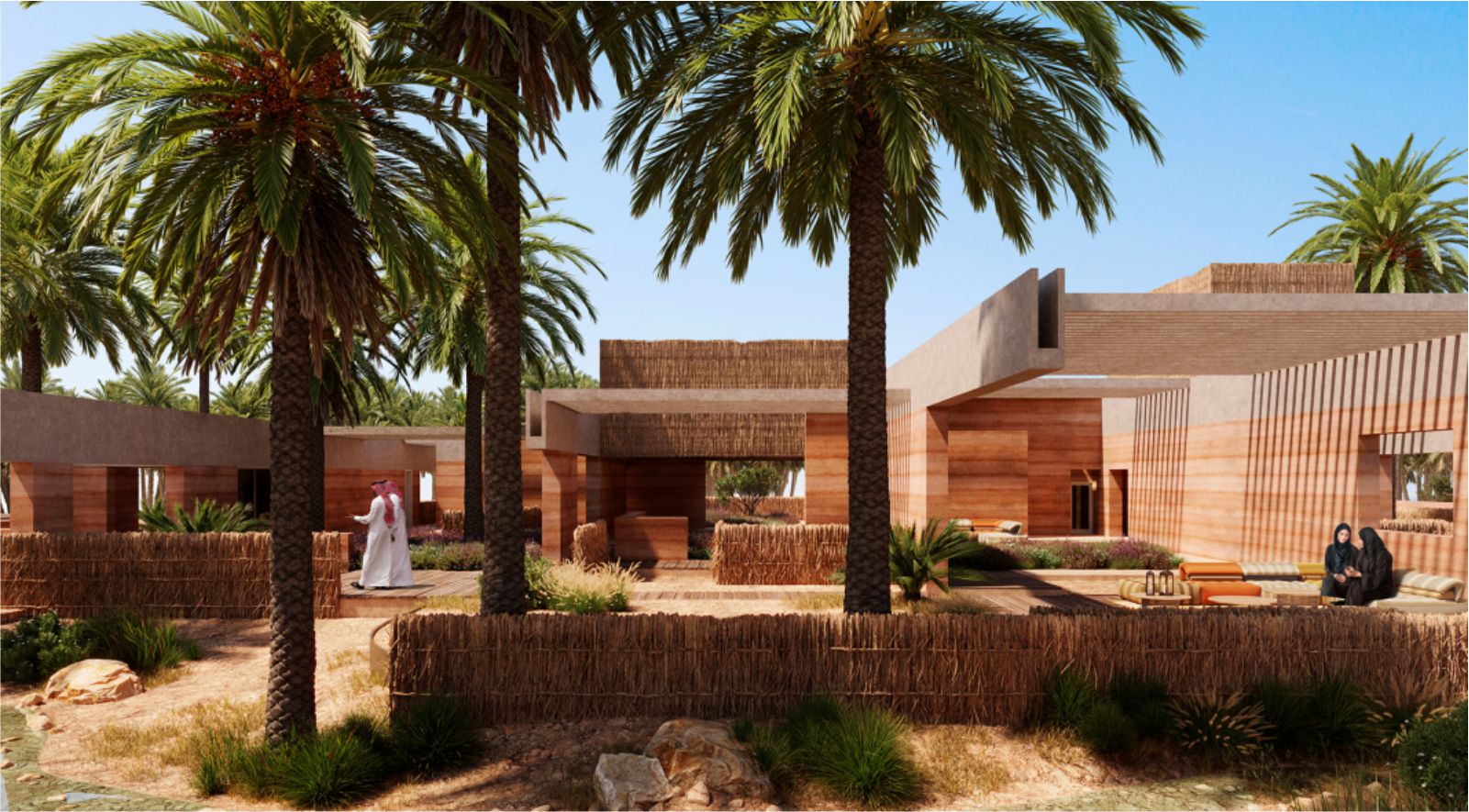The development of the design concept has its roots in a number of principles of Saudi culture, providing a contextual starting point. These are described as follows:
-Separation between protected open spaces and the open desert using walls
-Contrasting the formality of Islamic Garden design vs the freedom of the desert landscape
-Shaded areas in dialogue with the desert providing contrast to the presence of the sun

-Use of naturally occurring rocks as a design feature
-Specific seating furniture related to carpets
-Consideration of social behaviour and local traditions
-Promotion of activities after sunset
-Use of vegetation with low water requirements
Following these principles, several green spaces are proposed, such as existing date palms combined with smaller fruit trees, residential courts in the form of framed views, green links with water features, informal gardens containing playgrounds and fenced farms, as well as the creation of a buffer zone surrounding the plot using native plant species thar contrast the surrounding natural landscape.
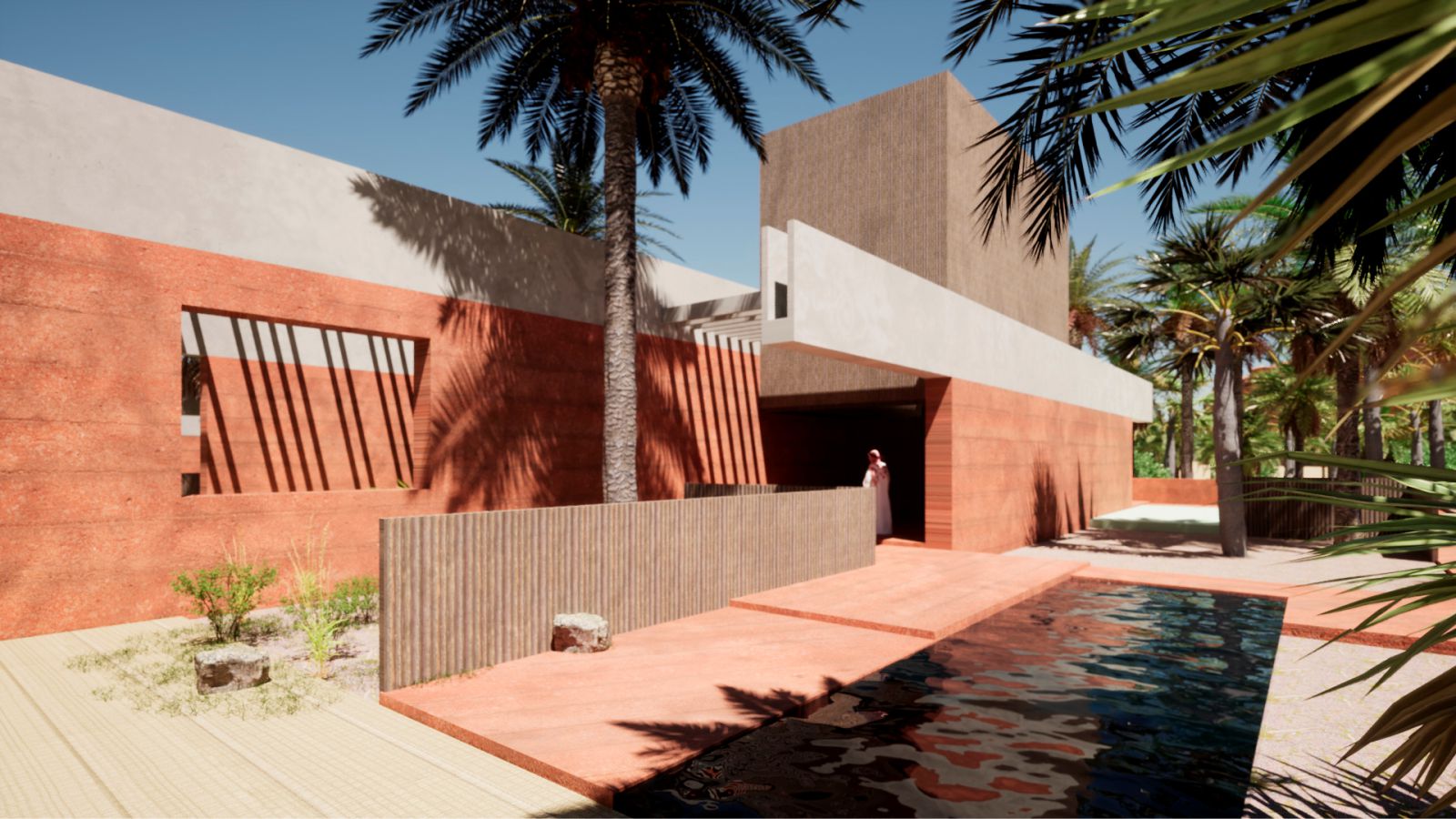
A self-sufficient plot
The high risk of flooding that characterises the plot is used as a way to create a water floor evacuation system through channels that serve, as well, as irrigation of new fruit trees.
The downward slope from east to west allows the irrigation of the entire west area by gravity. In order to make the plot self-sustaining, we propose the plantation of fruit trees, as well as a fenced-out area for livestock, including small herds of sheep, goats and camels.

Next to the house we allocate an herb garden for the cultivation of aromatic plants, spices and infusions, where a small orchard area dedicated to beekeeping through a small production of honey is included. Altogether, we envision a self-sustaining farm with an area of fruit trees, a cattle farm, a bee area and an orchard.
The larger, extensive part on the periphery of the Oasis area serves a s a transition zone between the plot and the desert landscape. There is little or no irrigation here; earth berms, artificial wadis and basins collect water run-off from roads and from drainage of the irrigated parts, whilst directing water to green fingers and tiny gardens which soften the rugged landscape.

The house spatial experience
The access is done gradually so that the visitor is guided but the architectural infrastructure elements that frame different visual and spatial experiences. The spatial concept leads the owners and guests through different indoor and outdoor spaces in order to enjoy the experience of the house.
Once we access the first prismatic volume built with palm leaves, the owners will walk through a palm grove that creates the feeling of an Oasis. This private Oasis concept will be repeated in the bedroom area and its patios. The most public area of the house is located on the east side, close to the access area with the kitchen, the living room and a small pantry.
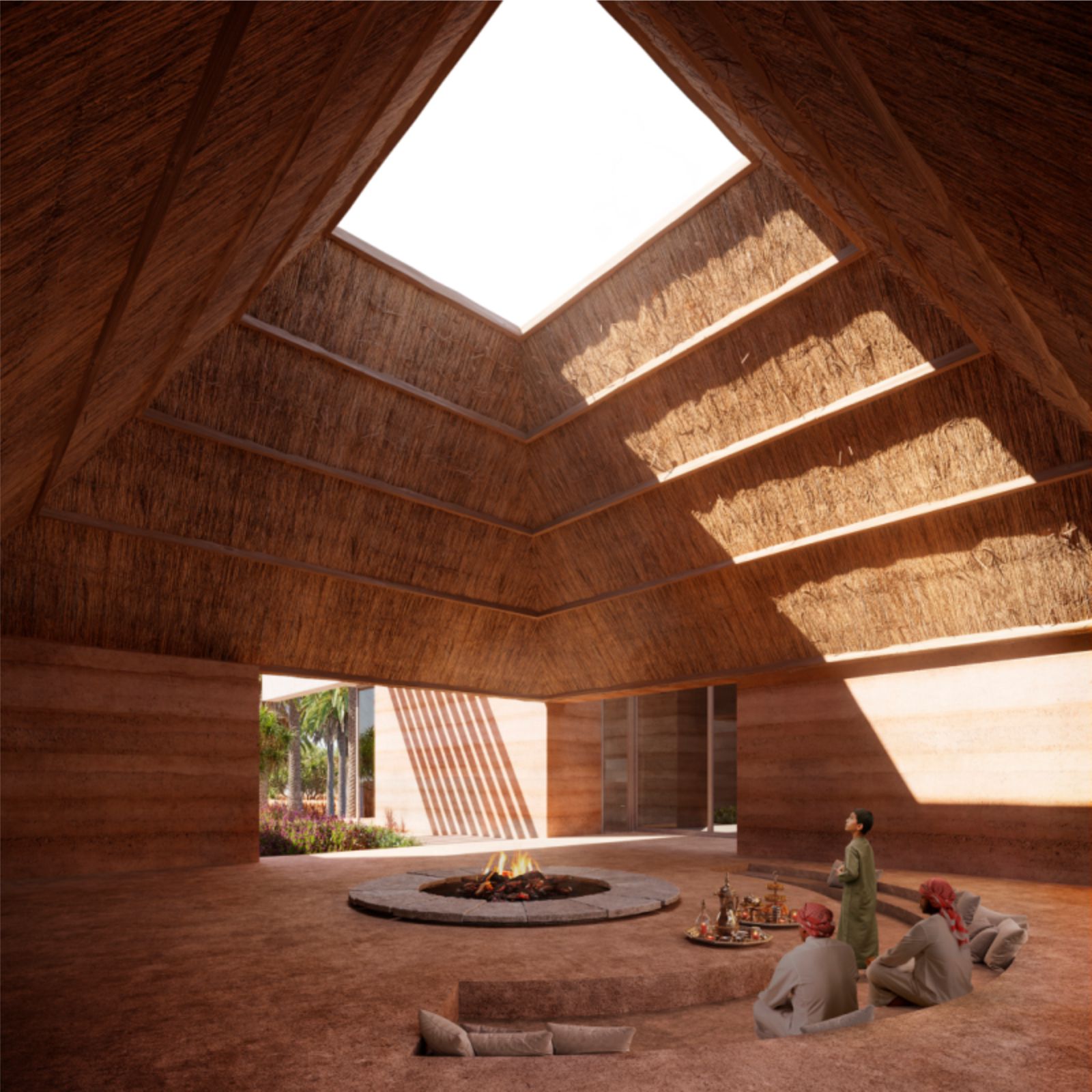
Welcome outdoor spaces can be found for guests and visitors to relax. On the hand, the materiality concept organises the parallel arrangement of rammed earth walls as opaque surfaces in contrast with perpendicular views, which are open in order to visualise the gardens and landscape.
The interior vs exterior relationship will always be present, such as in the access to the most private area, where a transitional space in the form of a truncated ziggurat volume built with timber poles cladded with palm leaf is located. Source by AGi Architects.

- Location: Al-Ula, Saudi Arabia
- Architect: AGi Architects
- Main Architects: Joaquín Pérez-Goicoechea
- Competition Project Team: Aisha Alsager, Nasser B. Abulhasan, Juan Salgado, Lucía Azurmendi, María Porras
- Client: Private
- Year: 2021
- Images: The Viz Company, Courtesy of AGi Architects
